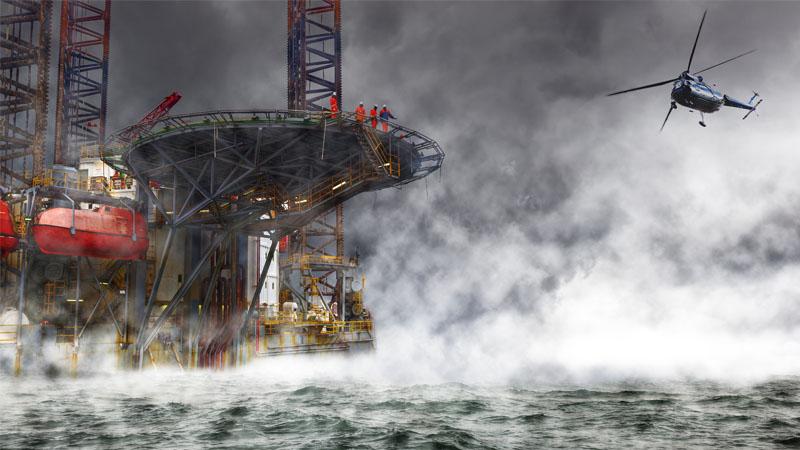Expert insights: The importance of accurate weather data in improving the safety of offshore helicopter operations
Interview with Steffen Bechtel, Managing Director and Founder, windpark heliflight consulting GmbH
Could you talk about your background in offshore helicopter operations and your company windpark heliflight?
I began my flying career in 1990 with the German Navy, piloting the SEA KING Mk41 helicopter for SAR (Search and Rescue) operations in the North Sea and Baltic Sea. After 17 years, I left the Navy in 2007 to join DRF Luftrettung, a leading HEMS (Helicopter Emergency Medical Service) operator in Germany.
During my time in Navy, I also freelanced for a Danish company servicing the Horns Rev 1 offshore wind farm by operating EC135helicopter for hoist operations, marking my entry into the offshore wind sector. In 2009, when I was involved in setting up hoist operations for the Alpha Ventus offshore windfarm, I founded windpark heliflight consulting GmbH in 2011, focusing on consulting and running helicopter operations in offshore wind.
At windpark heliflight, we handle all kinds of helicopter operation inquiries, conduct annual helideck inspections for fixed installations, vessels, and hoist areas on wind turbines in Germany, and assist new offshore windfarm projects to ensure seamless certification.
Can you describe the most challenging weather conditions that affect helicopter operations in offshore wind farms, and how you mitigate these challenges?
One might think that strong winds pose the biggest challenge for hoist operations, yet surprisingly, the reality is quite the opposite. Stronger winds actually reduce the power needed for a helicopter to hover, allowing for a greater load capacity. However, these conditions are often accompanied by increased turbulence, presenting a challenge for pilots to navigate. The primary concerns, though, arise during the winter months, with icing conditions and snowfall being particularly problematic. To mitigate these risks, we depend heavily on accurate weather reporting and forecasting to avoid such hazardous weather phenomena.
In offshore sites there can be sometimes issues with sensor calibrations and the potential for misleading weather information, how do you ensure the accuracy of weather data used for flight planning and how do think the data could be enhanced?
In the German offshore sector, we utilize weather sensors, which provide radio-transmitted weather forecasts similar to an Automatic Terminal Information Service (ATIS). These sensors are installed on nearly every Offshore Substation (OSS). Pilots can access these forecasts during flight through their aviation radios, ensuring they are well-informed about the weather conditions upon arrival. To maintain high accuracy, these sensors require regular calibration in line with the manufacturer's guidelines. Part of our annual helideck inspections includes verifying the validity of these calibration certificates, guaranteeing the reliability and high accuracy of weather data crucial for safe operation.
In your opinion, are there some compromises made between operational safety and cost efficiency in offshore operations? And how the safety measures could be improved?
My experience shows that both offshore wind and O&G sectors maintain very high flight safety standards, with significant effort and investment made annually to enhance safety. However, it's understood that despite the high priority of operational safety in these potentially dangerous environments, profitability remains essential. Balancing operational safety with cost efficiency is a challenge, not a contradiction, and there's always room for improvement. For instance, in the German sector, reliable, detailed weather data for specific routes is often unavailable because the German Weather Service (DWD), responsible for aviation weather forecasts, doesn't have access to platform data. Forecasts are based on broader area data, but more detailed weather information from platform sensors, presented as METAR and TAF reports, would greatly aid in planning and safety.
What challenges do you face when flying to offshore locations beyond 100 nautical miles, and how do you overcome them with limited weather data?
Accurate weather forecasting is crucial for our pre-flight planning, especially when operating far from shore where we must rely more on area forecasts than specific measurements, due to limited sensor availability. Inadequate data can lead to missions being uncompleted or flights being canceled. While we do have access to general weather forecasts, enabling offshore flights, there is significant room for improvement in the data sources used for these forecasts.
What improvements would you like to see in the communication of real-time weather conditions and operational data between pilots and offshore wind parks?
Making weather data from substations publicly accessible would greatly aid pilots by providing clear, route-specific weather information. However, these data are currently kept private by windfarm operators, likely due to IT security concerns. Ideally, such data would be available in-flight for real-time planning. While there are developments towards this goal, it's likely still a few years off.

